- Tarragon what is it?
- Useful properties of tarragon (tarragon).
- Growing tarragon from seeds.
- Application of tarragon (tarragon).
What is tarragon?
Tarragon is a herbaceous, perennial plant grown as a spice. It has a sharp, refreshing, anise-like taste and pleasant aroma. It is grown in the middle zone and even in Siberia, but is most common in the southern regions.There is odorous and non-fragrant (false tarragon) which has no nutritional value.
What does tarragon look like?
Another name for tarragon is tarragon. Under this name it is widely known in the Caucasus, where it is included in many national dishes.
Useful properties of tarragon
The external invisibility of the plant is compensated by its internal richness and a whole range of useful properties. Leaves and young shoots contain ascorbic acid (vitamin C), carotene (provitamin A), rutin, mineral salts, sugars, proteins, essential oils, phytoncides. Young herbaceous shoots smell pleasant and taste sharp.
Tarragon increases appetite, improves digestion, strengthens the nervous system and even acts as an energy drink, giving a person vigor and increasing his tone.
Since ancient times, the beneficial properties of tarragon have been used in folk medicine. It is used as an anthelmintic and diuretic, for the prevention and treatment of scurvy, and for attacks of hiccups. Used as an antidote for snake bites. To relieve toothache, just chew the leaves of the plant.
Contraindications: Tarragon should not be consumed by pregnant women. The abortifacient properties of this herb have long been known; eating it can cause a miscarriage.
Growing tarragon from seeds
In vegetable gardens they grow fragrant tarragon, a perennial rhizomatous plant of the Asteraceae family. This is a bush up to half a meter high and higher with narrow leaves on numerous stems, externally resembling wormwood. It blooms with inconspicuous small yellowish flowers, but
this rarely happens.
Tarragon can be grown in one place for up to 15 years, but in the garden it is better to change its place every 3-4 years. Older plants reduce the yield of greens.In addition, the greens of old tarragon bushes are considered less healthy.
Where is the best place to plant? You can grow tarragon on any soil, but it feels better in garden areas moderately filled with organic matter. Excess organic matter is not needed: there will be a lot of stems and leaves, but they will lose some of their aroma. It can grow in both sun and light shade.
The plant is cold-resistant: it can withstand minus 30 degrees even with light snow cover. In spring it grows early - as soon as the ground begins to thaw. Often, already in early April, its young stems can be used to flavor salads and meat dishes.
Sowing seeds. Tarragon is propagated by dividing the bush, root suckers, cuttings, and seeds. Vegetative propagation is easier, but when tarragon is not yet growing in the garden, you have to sow seeds. And they are very small and germinate slowly (2-3 weeks). And all this time, the soil in the seedling container or garden bed must be kept moist.
Sow the seeds in shallow, moist furrows, without sprinkling them, but only lightly pressing them to the ground. Tarragon can be sown in open ground in the 2nd - 3rd decade of May. Sowing is carried out in rows every 70 cm. The seeds are poured into the furrows to a depth of 0.5 cm. If the seedlings are dense, they are thinned out, increasing the distance between plants to 10-15 cm.
Caring for tarragon is simple: weeding, watering, loosening the soil. Starting from the second year, plants are fed in the spring with complex mineral fertilizer (a tablespoon per square meter). You can sprinkle a little compost or wood ash under each bush.
In the first year of cultivation, water 3-5 times per season, trying to ensure that the water penetrates to the depth of the roots. In the future, watering is carried out only during dry periods.
The soil is loosened shallowly and maintained in a loose state until the plants grow. Tarragon, like mint, grows using underground shoots, so it sometimes shades neighboring plants. To limit its spread, planting in the soil is protected with slate. For the same reason, tarragon is sometimes grown in old buckets (possibly without a bottom), which are best buried in the ground.
Reproduction by division. Adult plants are dug up, divided and planted in a new location. Each division should have 1-2 buds with rhizomes.
Cuttings. If it is necessary to obtain a large number of plants, cuttings are used. Up to 80 cuttings can be prepared from one plant. The best time for this method of propagation is spring or early summer, when there is increased growth and rooting occurs faster.
From well-grown bushes, you can cut cuttings 10-15 cm long and plant them in a greenhouse. The soil mixture for cuttings is prepared from humus and sand. The cuttings are planted to a depth of 4-5 cm. Then the cuttings are covered with a film on the arches and shaded. The cuttings are regularly watered and ventilated. The best temperature for rooting is 18 degrees. At this temperature, root formation occurs in 15–20 days.
Tarragon is also grown from sections of rhizomes. In early spring, rhizomes are dug up and cut into pieces about 5 cm long. Root cuttings are also planted in cuttings.
Greenery from plants of the first year of life begins to be cut off closer to autumn, so as not to weaken them on the eve of winter. Adult bushes are pruned many times during the season, each time leaving branches up to 10 cm long. The more often tarragon is pruned, the more shoots with delicate fragrant leaves are formed on it.The first spring pruning is carried out when the shoots reach a height of 20-25 cm. In the autumn, when the shoots die, they are pruned at soil level.
How to prepare tarragon
When dried, the Russian form almost completely loses its odor, so tarragon is usually used either fresh or in the form of a vinegar extract - tarragon vinegar.
To prepare it, the greens are poured into bottles, filled with vinegar and tightly sealed, infused for several days in a dark place. Then strain and use as a seasoning.
If you are still planning to dry the grown tarragon, it is cut at the very beginning of flowering, tied into bunches and dried as quickly as possible. It should be stored only in hermetically sealed jars.
Application of tarragon
Use of tarragon in cooking. In cooking, fresh and dried tarragon leaves are used, which have a light anise aroma. In the cuisines of many nations, fresh greens are added as a seasoning to hot first courses (broths, soups) and cold okroshkas, beetroot soups, etc. Twigs and chopped leaves are added to salads, appetizers, side dishes for meat, chicken, vegetable and egg dishes, as well as seafood dishes. It helps to significantly improve the taste and aroma of dishes prepared from offal. Quite often, tarragon is added to various sauces.
In home canning the spice is added to marinades when pickling cucumbers, squash, zucchini, mushrooms, sauerkraut, soaking apples, etc.
Drinks made from tarragon. You can make delicious and healthy drinks from plants grown in your garden:
- Wash one bunch of tarragon, cut off the lower branches, and chop the leaves into pieces 3 cm long.
- Place them in a clay jug and pour boiling water over them.
- Add 6 - 7 tbsp. l. granulated sugar for every liter of water.
- Let the drink brew for several hours.
- Its readiness can be judged by its beautiful green color.
- Before drinking, squeeze a little lemon juice (about 1/4 lemon) into the drink.
- Serve only chilled!
The beneficial properties and pleasant aroma of tarragon make it an indispensable spice in the kitchen of every housewife. The most familiar dishes, flavored with a pinch of tarragon, will acquire a special taste!
Famous varieties of tarragon: Russian, French, Gribovsky-31. The first two varieties are distinguished by their pungent taste and strong aroma. Gribovsky-31 has more tender shoots, a pleasant spicy smell, and less essential oils. It grows quickly and produces a high yield of greenery (up to 2-3 kg). It is not recommended to grow tarragon in one place for more than 3 - 4 years.
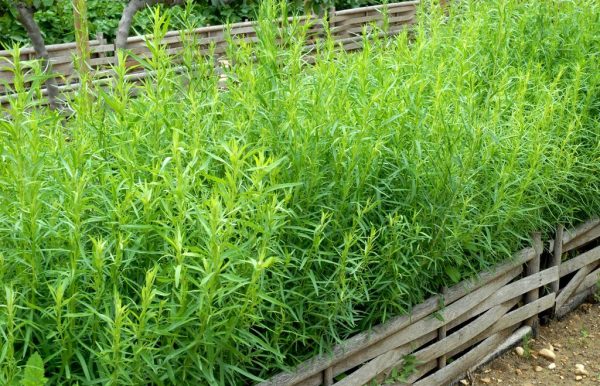
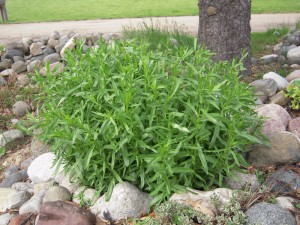
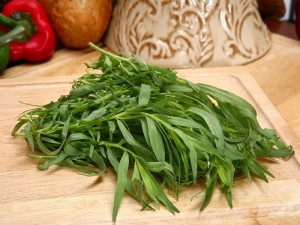
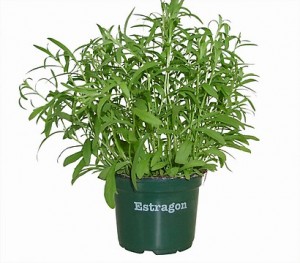
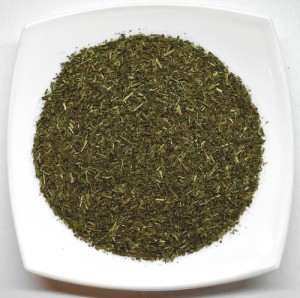
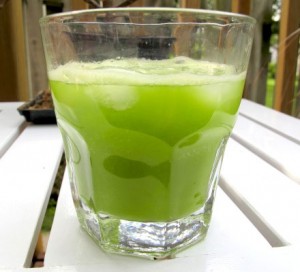


 CUCUMBERS NEVER GET SICK, I'VE BEEN USING ONLY THIS FOR 40 YEARS! I SHARE A SECRET WITH YOU, CUCUMBERS ARE LIKE THE PICTURE!
CUCUMBERS NEVER GET SICK, I'VE BEEN USING ONLY THIS FOR 40 YEARS! I SHARE A SECRET WITH YOU, CUCUMBERS ARE LIKE THE PICTURE! You can dig a bucket of potatoes from each bush. Do you think these are fairy tales? Watch the video
You can dig a bucket of potatoes from each bush. Do you think these are fairy tales? Watch the video
 How our fellow gardeners work in Korea. There is a lot to learn and just fun to watch.
How our fellow gardeners work in Korea. There is a lot to learn and just fun to watch. Eye trainer.The author claims that with daily viewing, vision is restored. They don't charge money for views.
Eye trainer.The author claims that with daily viewing, vision is restored. They don't charge money for views. A 3-ingredient cake recipe in 30 minutes is better than Napoleon. Simple and very tasty.
A 3-ingredient cake recipe in 30 minutes is better than Napoleon. Simple and very tasty. Therapeutic exercises for cervical osteochondrosis. A complete set of exercises.
Therapeutic exercises for cervical osteochondrosis. A complete set of exercises. Which indoor plants match your zodiac sign?
Which indoor plants match your zodiac sign? What about them? Excursion to German dachas.
What about them? Excursion to German dachas.